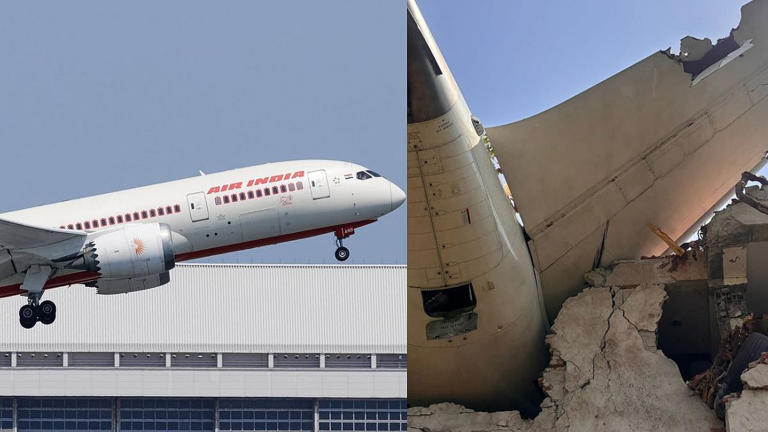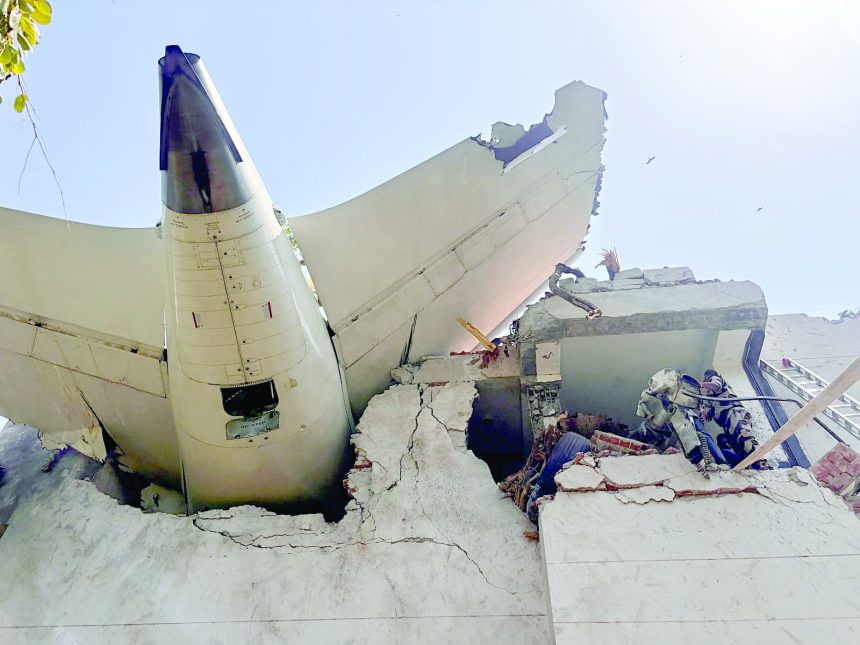
Air India Flight AI-171 Crash
Ahmedabad, June 12, 2025 – 1:10 PM IST: Air India Flight AI-171, a Boeing 787-8 Dreamliner scheduled to take off for London Gatwick from Ahmedabad International Airport, was operating under seemingly perfect conditions. The crew’s pre-flight breath analyzer test at 11:25 PM showed normal results. Flight logs confirmed both pilots were well-rested in the previous 24 hours.
At 12:30 PM, the crew reached the boarding gate and initiated pre-flight checks. Weather at the Sardar Vallabhbhai Patel International Airport was reported as stable, normal visibility, winds, and no weather warnings. The aircraft carried 230 passengers, 12 crew members, and 54,000 liters of fuel, remaining within its permitted takeoff weight. There was no dangerous cargo onboard.
By 1:18 PM, the Dreamliner began taxiing to Runway 23, and all systems indicated green. The takeoff roll began, and the aircraft lifted off at 1:38 PM. However, 42 seconds later, everything changed.
Fuel Cutoff: A Mysterious Anomaly
At 1:38:42 PM, the Enhanced Airborne Flight Recorder (EAFR) captured the aircraft reaching its top speed of 180 knots. Then, suddenly, the fuel supply to both engines was cut. The cockpit’s fuel cutoff switches, located between the pilots, simultaneously moved from “run” to “cutoff.”
These switches, designed to initiate or halt engine operation on the ground or in emergencies, are spring-loaded with safety guards to prevent accidental contact. Shockingly, this transition from run to cutoff occurred within a second.
Cockpit voice recordings indicate chaos: One pilot exclaimed, “Why did you cut off?” to which the other replied, “I didn’t.”
Loss of Engine Power
By 1:38:47 PM, N2 values—representing engine power—plummeted below idle speed, confirming the engines were effectively shut down. In response, the aircraft’s emergency hydraulic pump and Ram Air Turbine (RAT) were deployed to provide power.
Desperate attempts followed. At 1:38:52 PM, the crew reactivated engine 1 by switching it back to “run,” followed by engine 2 at 1:38:56 PM. Boeing’s Full Authority Digital Engine Control (FADEC) automatically initiated the engine relight sequence. Exhaust Gas Temperature (EGT) readings confirmed ignition sequences: Engine 1 began recovering, but engine 2 failed to stabilize.
Tragically, the aircraft lacked altitude and time. A distress “Mayday” call was transmitted at 1:39:05 PM, but the Enhanced Airborne Flight Recorder stopped at 1:39:11 PM. The aircraft crashed shortly thereafter, resulting in a fiery explosion and the death of all 270 people onboard.
Preliminary Report Raises More Questions
A month later, the government released a preliminary crash report without a press conference or opportunity for questions. Instead of providing closure, the report sparked further controversy and speculation.
The primary question: What caused the fuel switches to move from run to cutoff? These are not ordinary toggles; they are spring-loaded, protected, and require deliberate action to move.
Some claim pilot error. Western media have quickly labeled it a “confusion in the cockpit” scenario. But the recorded conversation shows that neither pilot acknowledged flipping the switch.
Could this be a technical failure? A software bug? Or even sabotage?
The EAFR confirms the switches moved, but does not explain how—mechanically, electrically, or due to a software anomaly. There are no cockpit cameras, so physical confirmation is impossible.
Historical Warning Signs Ignored?
AI-171 had flown from Delhi to Ahmedabad earlier as flight AI-432. That crew reportedly logged a fault code related to a stabilizer sensor. While Air India claims to have resolved it, one must ask: Could other critical components—like the fuel switch—have been compromised too?
A chilling reference comes from a December 17, 2018, FAA Special Airworthiness Information Bulletin. The document warned of faulty locking features in fuel cutoff switches—originally identified in 737 aircraft but relevant to similar components in the 787.
The bulletin clearly stated that if the locking mechanism fails, switches could slip into cutoff mode mid-flight, leading to dual-engine shutdowns.
Boeing and Air India: Culpability and Oversight?
According to records, Air India replaced throttle controls in 2019 and 2023, but the fuel switches were not replaced or checked under this advisory. Because the FAA’s warning wasn’t mandatory, no corrective action was taken.
This raises a troubling point: Did Boeing and Air India neglect a known vulnerability? Much like the MCAS system that contributed to the 737 MAX disasters, are we witnessing another preventable tragedy hidden under the guise of “pilot error”?
The pilot community in India is alarmed. Several pilot associations have criticized the investigation’s lack of transparency. They argue the government appears more focused on protecting reputations than pursuing the truth.
No Simple Explanation
The preliminary report ruled out bird strikes, fuel contamination, and weather issues. Flap settings were correct, landing gear was deployed as expected, and the pilots had clean medical and training records. Weight and balance calculations were within limits.
If everything else was fine and the pilots were fit and certified, then why default to blaming them?
Could there have been an unknown third person in the cockpit? Was it a cybersecurity breach? The rumors are wild—but beneath them lies the undeniable fact: the switches moved, and nobody knows why.
Call for Action
This tragedy must be a wake-up call. Every Boeing 787 aircraft, especially those using the same GE engines and fuel switch mechanisms, should undergo urgent inspection.
Software systems, mechanical locking features, and electrical components need rigorous testing. Recommendations must move beyond advisories to mandatory compliance.
The silence from Boeing, and the tepid response from aviation authorities echo the 737 MAX cover-up saga. If we don’t act now, we risk repeating the same mistakes—only this time, with even more lives at stake.

Also Read: Police Can’t Act as Recovery Agents
This article is published by Crime Today News ©






